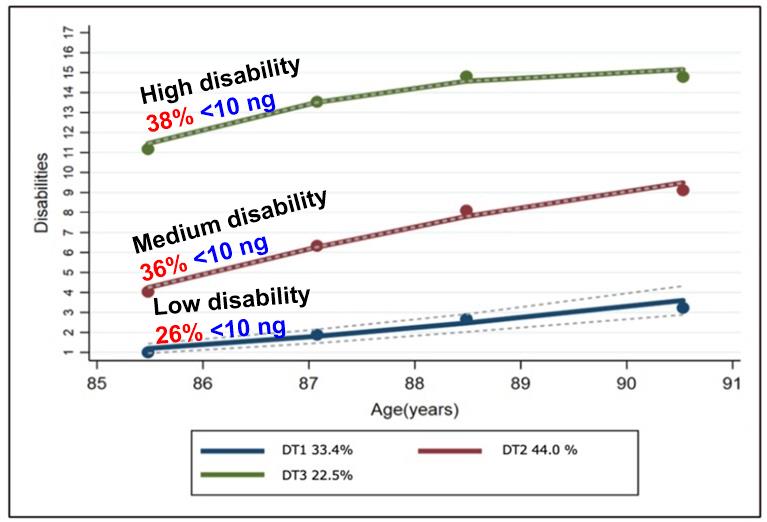85 year olds who were not Vitamin D deficient had and continued to have few disabilities
The Association between 25-Hydroxyvitamin D Concentration and Disability Trajectories in Very Old Adults: The Newcastle 85+ Study
Nutrients 2020,12, 2742; doi:10.3390/nu12092742
Sarah Hakeem 1,2,3, Nuno Mendonca 1,2,4,5, Terry Aspray 6, , Andrew Kingston , CarmenRuiz-Martin CarolJagger John C.Mathers O/Rachel Duncan7 and Tom R.Hill 1,2' tom.hill@ncl.ac.uk

📄 Download the PDF from VitaminDWiki
Model 4

Background: Low vitamin D status is common in very old adults which may have adverse consequences for muscle function, a major predictor of disability. Aims: To explore the association between 25-hydroxyvitamin D [25(OH)D] concentrations and disability trajectories in very old adults and to determine whether there is an ‘adequate' 25(OH)D concentration which might protect against a faster disability trajectory.
Methodology: A total of 775 participants from the Newcastle 85+ Study for who 25(OH)D concentration at baseline was available. Serum 25(OH)D concentrations of <25 nmol/L, 25-50 nmol/L and >50 nmol/L were used as cut-offs to define low, moderate and high vitamin D status, respectively. Disability was defined as difficulty in performing 17 activities of daily living, at baseline, after 18,36 and 60 months.
Results: A three-trajectory model was derived (low-to-mild, mild-to-moderate and moderate-to-severe). In partially adjusted models, participants with 25(OH)D concentrations <25 nmol/L were more likely to have moderate and severe disability trajectories, even after adjusting for sex, living in an institution, season, cognitive status, BMI and vitamin D supplement use. However, this association disappeared after further adjustment for physical activity. Conclusions: Vitamin D status does not appear to influence the trajectories of disability in very old adults.
